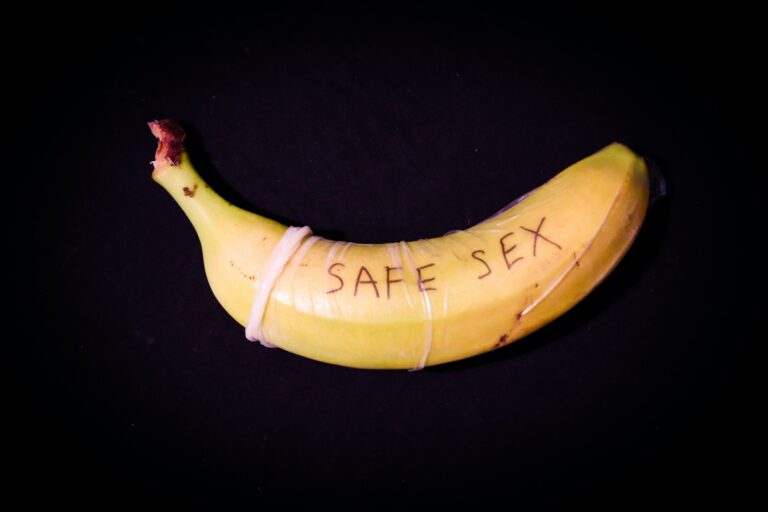Condoms are a powerful tool to protect against pregnancy and sexually transmitted infections (STIs). They’re up to 98% effective when used correctly.
But they can break for many reasons. Here’s how to assess the situation and what to do next. First, determine whether the condom broke before or after ejaculation.
Damage
One of the biggest reasons condoms break is because they’ve been damaged. Condoms are made of latex, which is prone to tearing and puncturing, especially if it’s exposed to heat or rough surfaces. Carrying condoms in your wallet or in a small compartment in your purse can expose them to excessive friction, which can weaken the material and lead to breaks. Opening a condom with your teeth or other sharp objects also increases the risk of damage.
The CDC recommends keeping your condoms in a cool, dry place, away from heat and moisture. They can also be stored in a special case that will keep them protected from rough surfaces. Another common cause of condom breakage is that they’re past their expiration date. Condoms can last 2-3 years after their production date, but if they’re too old, the material degrades and could lead to breaks or slippage during use.
Other reasons condoms break include using the wrong size or type of lubrication, allowing the sheath to slip off during penetration, and ignoring the signs of a broken condom such as the presence of semen or an obvious rip. A manufacturer defect may also be the culprit in some cases, though this is rare since manufacturers put condoms through a rigorous testing process to ensure quality.
Semen Leakage
When a condom breaks, semen may leak into the vagina or anus. This is especially likely if the break occurs during sexual intercourse. If this happens, you should use emergency contraception as soon as possible to minimize the risk of pregnancy and STIs.
Semen leakage is also more common when a person uses the wrong type of lubricant with a latex condom or when they store a condom incorrectly. Studies show that between 0.8 percent and 40.7 percent of people experience condom breakage, and 13.1 percent to 19.3 percent of those experiences involve semen leakage.
You might be able to avoid some of these issues by using external condoms (the kind that go over the penis) or plastic rubber condoms. These types of condoms do not break as often as latex condoms and are a good option for those who have latex allergies. You can also reduce the chance of a condom breaking by making sure that it’s not too old or ripped when you’re putting it on, by using the right size lubricant, and by avoiding oil-based lubricants with latex condoms (these degrade them).
If you have a condom break during sexual intercourse, the first thing you should do is assess the situation. Was the condom still on your partner’s penis? Did it break before or after ejaculation? It’s important to know because you will have to take different precautions depending on the answer to these questions.
Sexually Transmitted Infections
When a condom breaks, you can be exposed to sexually transmitted infections (STIs) or pregnancy. The risks depend on when the condom broke and what kind of sex you were having.
The biggest risk is pregnancy. Over-the-counter morning after pills like Plan B or Ella can prevent pregnancy, and getting STI tested is also important. The earlier, the better, since some STIs don’t show up on tests for weeks or even months.
A condom that breaks during oral, vaginal, or anal sex exposes your penis to sperm, which can cause infection. If the condom was a male type, you may feel a loss of tension around your penis or see sperm leakage.
Using lubricant can help with friction, but improper storage or use of the condom can increase its chances of breaking. Keeping condoms in a warm place, opening them with teeth, or wearing too many at once can all lead to breakage.
If a condom breaks during sex, you can both be at risk for gonorrhea and chlamydia. If one of you is at risk for HIV, you may need immediate “HIV post-exposure prophylaxis” medication. It can take two to three weeks for the virus to show up in blood tests, but this drug may cut your risk of infection dramatically. You can get PEP at your doctor or at most walk-in medical clinics.
Pregnancy
Whether the condom breaks before or after ejaculation, both partners are at risk of pregnancy and sexually transmitted infections. The key is to act quickly, but calmly. First, dispose of the broken condom in a toilet (don’t flush it). If the condom broke during sex, stop having sex, and switch to using a new condom. If you’re worried about pregnancy, contact your doctor, nurse practitioner or health clinic to talk about emergency contraception. You can also get an over-the-counter morning-after pill, like Plan B, at any drugstore or pharmacy.
Condoms can be damaged in a number of ways, from extreme heat to lubricants that aren’t safe for latex condoms. To lower your risk of breaking a condom, use only safe lubricants, store condoms away from heat and don’t open them with anything sharp or your teeth.
There’s no greater panic than coming out of sex and realizing the condom you just used broke. It’s important to remember that these situations are relatively rare, but being prepared and having a backup method of birth control will help. It’s also important to stay calm and evaluate the situation. Try not to let your imagination wander into the “what ifs,” and don’t forget to get a few weeks’ worth of STI and pregnancy screenings. Those will be the best way to know for sure whether you or your partner is pregnant or infected with an STD.
See Also:



